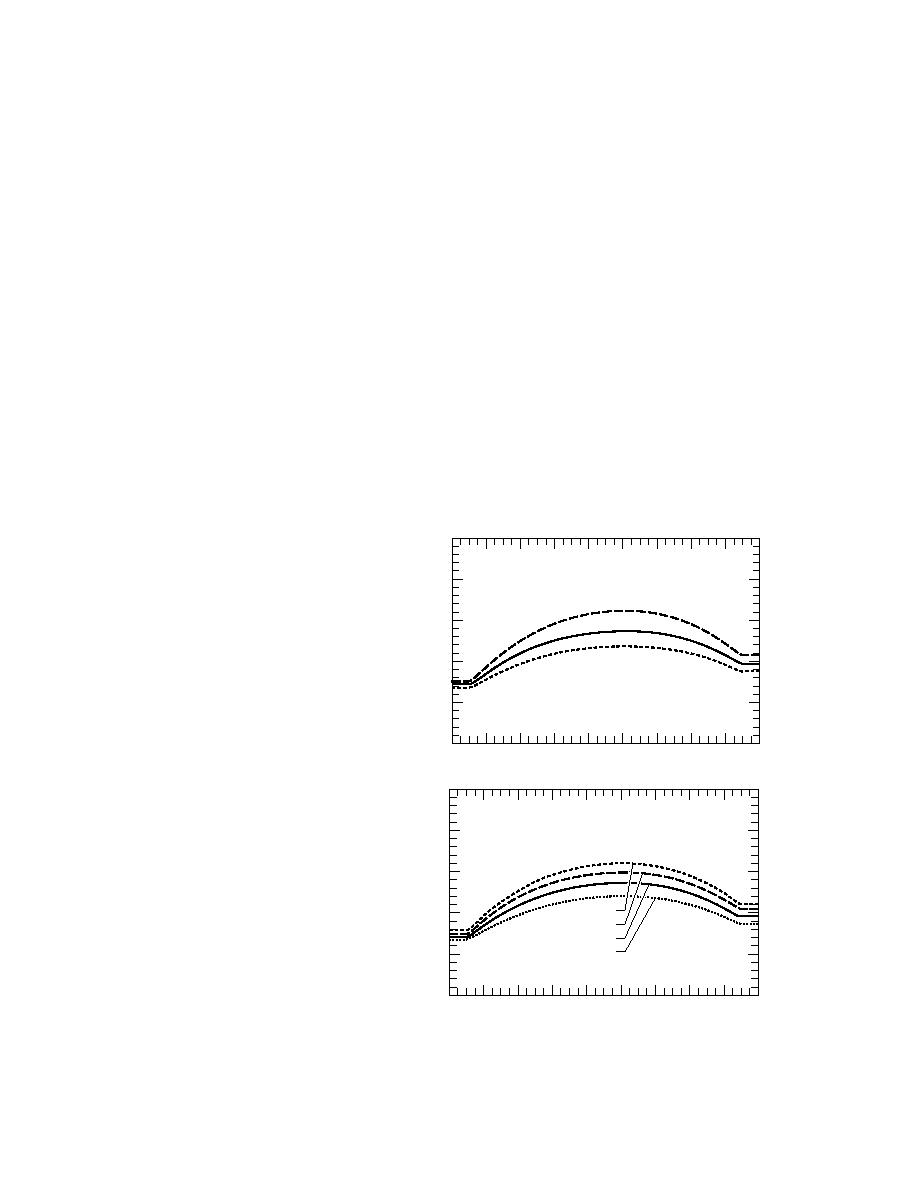
γ = 0.15, represents a conservative but not insig-
creasing component perpendicular to the axis of
the sastrugi, CDN10 continues increasing. CDN10 has
nificantly small sastrugi coverage.
its maximum at Φ = 101.3, where it is 2.73 103
Figure 4 shows two sets of predictions for
CDN10 as a function of Φ based on the model
for the γ = 0.15 and h = 10 cm case. Again, m and n
developed in the preceding section. Figure 4a
set the location for this maximum; this is where
A(Φ) has its maximum. The CDN10 value there is in
sastrugi heights of 5, 10 and 20 cm, typical heights
fair agreement with the maximum value that we
observed on ISW, 2.54 103 (AC95).
represented in our snow-surface roughness sur-
As Φ increases toward 180, the model is entire-
veys (e.g., Fig. 2). The 10-cm case fits our observa-
tions quite well. Here, CDN10 is 1.431.45 103
ly speculative, since we have few data with which
when the flow is head-on or within 12 of head-
to compare such a reversal in the wind and be-
<
on (that is, when Φ ~ β). These values agree well
cause CR3 is the least certain of the form drag coef-
ficients. For now, the decrease as Φ approaches
with the nominal minimum value for CDN10 of
180 seems reasonable because the silhouette area
1.5 103 that we reported in AC95.
When Φ gets larger than 11.3 (see eq 3), the
is decreasing rapidly. But the absolute values for
wind can see the side ridge of the obstacle. In ef-
CDN10 in this region are certainly open to debate.
fect, it sees a larger silhouette area and a higher
In Figure 4a, the calculations with h values of 5
value of CR; CDN10 must thus increase. Figure 4
and 20 cm are less realistic than for h = 10 cm. For
shows that if the wind rotates just 20 from head-
h = 5 cm, the maximum CDN10 value calculated is
on, CDN10 will increase by 1524%, in good agree-
8% less than our observed maximum; for h = 20
ment with our observations in AC95.
cm, the calculated maximum is 27% higher than
As Φ increases and the wind thus has an in-
what we observed. For all three heights, however,
5
γ = 0.15
4
h = 20 cm
3
10 cm
5 cm
103 CDN10
2
1
a. γ = 0.15 (the sastrugi cover 15% of the
0
0
20
40
60
80
100
120
140
160
180
surface) and h = 5, 10, and 20 cm.
Wind Direction, Φ ()
5
h = 10 cm
4
3
103 CDN10
γ = 0.25
2
0.20
0.15
0.10
1
b. h = 10 cm and γ = 0.10, 0.15, 0.20, or
0.25. Notice, the γ = 0.15 line is the same
0
0
20
40
60
80
100
120
140
160
180
as in Figure 4a
Wind Direction, Φ ()
Figure 4. Model calculation of CDN10 as a function of the wind orientation (Φ) with respect to the
dominant axis of the sastrugi. Model parameters are m = 4, n = 10, CS10 = 1.10 103, CR1 = 0.10,
CR2 = 0.30, CR3 = 0.30, c = 0.25, cw = 4 and cd = 0.6.
8



 Previous Page
Previous Page
